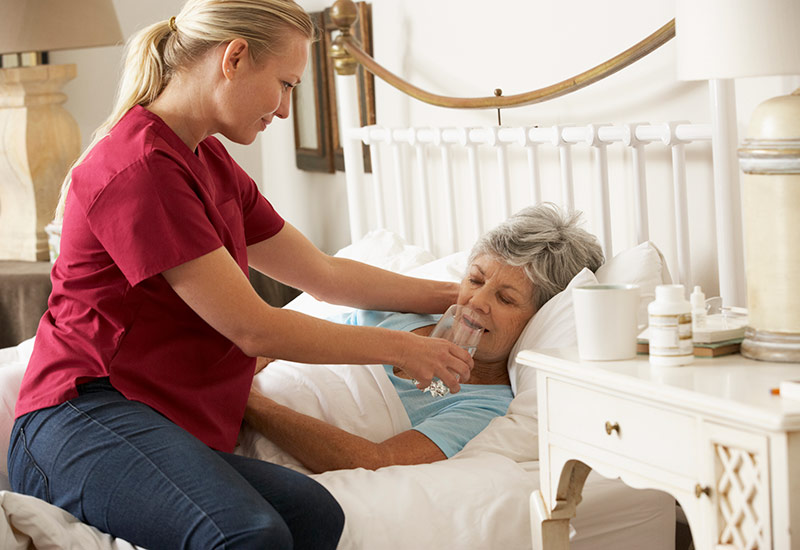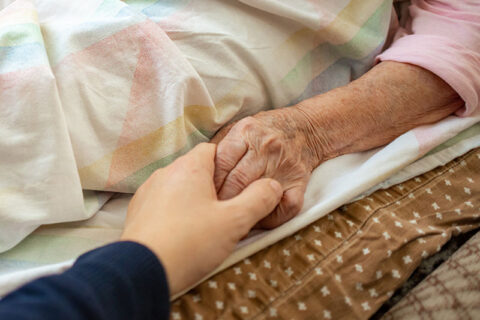What’s Expected of a Hospice Patient’s Primary Caregiver

Aging comes with many joys—retirement, more time with family, and more time to travel. However, aging also leads to decreased independence, and for many older folks, hospice care is necessary. As a family caregiver, watching your loved one enter hospice can be one of the most difficult things you have to do. While nothing can make the emotions go away, the right education can make your circumstances less overwhelming.
Hospice caregivers often have a long list of responsibilities, from everyday care to transportation. As you take up the role of family caregiver, here’s what might be expected of you as your loved one moves into hospice care.
Aiding With Daily Care Responsibilities
As a primary caregiver, you’ll handle many of the day-to-day activities that help maintain your loved one’s comfort. This includes assisting with personal hygiene tasks such as bathing, grooming, and dental care, and you might also help with mobility. Hospice caregivers are often responsible for meal preparation and assistance with eating, especially as their loved one’s appetite changes.
Managing Medication
Medication management is one of the most important hospice aide responsibilities that a family caregiver might take up. You’ll need to understand dosing schedules and know how to administer various forms of medication. If you are managing numerous medications, you may even want to attend doctor’s appointments with your loved one to ensure you have everything organized correctly.
Communicating and Coordinating With Others
Beyond hands-on care, hospice caregiver duties usually include communication and coordination with healthcare providers. This means reporting changes in your loved one’s condition, asking questions about care protocols, and advocating for their preferences. You might also be the liaison between your loved one and other families, ensuring they stay connected to the rest of their support network.
Keeping Up With Medical Care
While you won’t be expected to provide medical treatment, you will learn to observe and report changes in your loved one’s condition. This includes monitoring breathing patterns, skin color changes, appetite levels, and pain indicators. If you choose a reliable home hospice care provider, they can train you to recognize the warning signs that require professional attention. As a family caregiver, you may also have to help your loved one express their needs to their healthcare team.
Providing Emotional and Psychological Support
Beyond physical care, an at-home hospice caregiver typically provides emotional support. This could be as simple as sitting with your loved one and chatting with them or as involved as participating in their favorite activities. Whenever possible, it’s a good idea to maintain your loved one’s normal routine, as this can provide significant comfort and help with mental health.
Facilitating Difficult Conversations
Hospice care often involves discussions about end-of-life wishes, funeral arrangements, and saying goodbye. As a primary caregiver, you may facilitate these conversations or help your loved one communicate their desires to other family members. These discussions are never easy, but they’re often necessary for ensuring your loved one’s wishes are respected.
Pinning Down Practical Matters
In addition to caring for your loved one’s physical health and mental well-being, you may need to handle some practical matters on their behalf. Everyone’s situation is different, but family caregivers often take care of the following:
- Home Adjustments—You may need to make adjustments to your loved one’s home environment as their needs change. In some cases, rearranging furniture or installing safety equipment could be necessary. Talk to our team about obtaining the medical equipment your loved one needs.
- Managing Visitors—Hospice patients don’t always have the energy to see visitors. You’ll help determine when your loved one is up for social interactions and for how long.
- Legal Matters—You might assist with organizing important legal documents, including advance directives and insurance information. Some hospice caregivers even help their loved ones make final modifications to their wills.
Helping You Be the Best Possible Caregiver
Serving as a primary caregiver for a hospice patient is nothing short of a challenge, but with the right support, you can handle it. At Agape Hospice & Palliative Care, we serve families in Los Angeles and Orange Counties navigating the challenges of caregiving with personalized in-home hospice services. Get in touch with us today to learn more about how we can help you.


